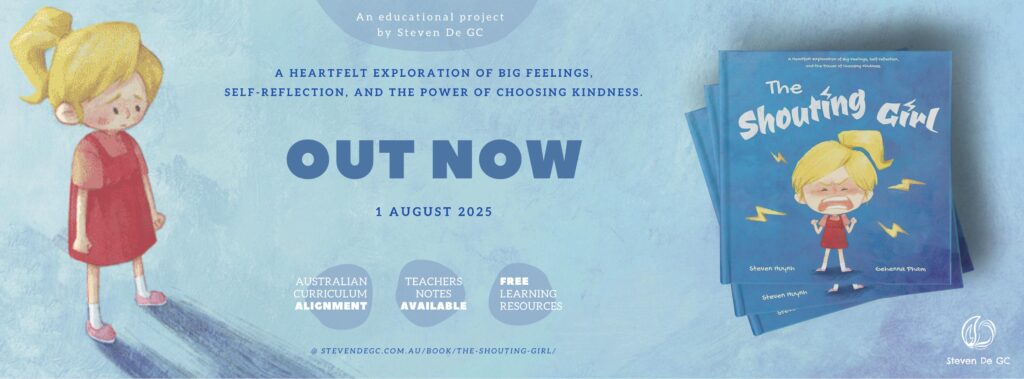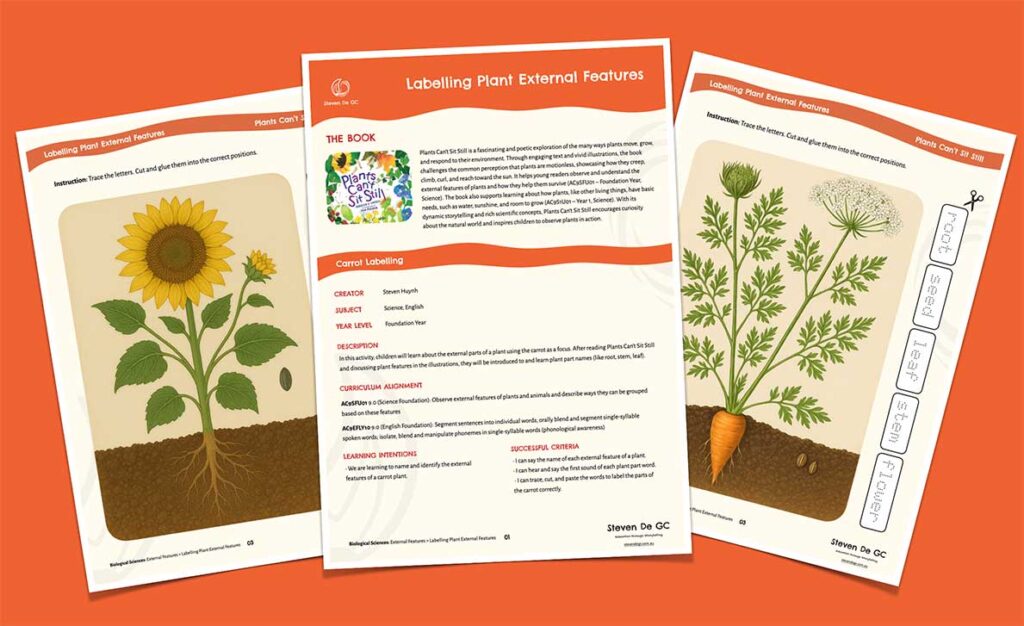- Introduction (5 minutes)
- Read the book Bears on Wheels aloud to the class.
- Pause on each page and ask, “How many bears are there?” or “How many wheels do you see?”
- Encourage students to count along.
- Whole-class Activity (10 minutes)
- Setup: Teacher’s whiteboard, some dice, counting bears and wheels.
- Instructions:
- Roll the dice, one for the number of bears, the other for the number of wheels (e.g., “4 and 2”) and ask one student to place 4 bears and 2 wheels on the board.
- Encourage children to arrange the bears and wheels in a creative, fun way (e.g., the bears going upside down on the wheels).
- As each student places the items, the whole class counts together: “1, 2, 3, 4 bears! 1, 2 wheels!”
- Practice
- Hands-On Individual Practice
- Give each student 5 bears and 5 wheels.
- Ask them to create collections of bears and wheels that match numbers you call out (e.g., “Can you make 2 bears on 2 wheels”), or they can use dice like in the whole class activity.
- Encourage them to count aloud.
- Worksheet: “Match the Bears, Draw The Wheels”
- Match a numeral and the number of bears.
- Draw wheels to match the numeral given.
- Hands-On Individual Practice
Bears On Wheels (Counting)

The Book
Bears on Wheels
Written & illustrated by Jan Berenstain and Stan Berenstain, published by Random House Books for Young Readers
This lively and engaging story introduces young readers to basic counting from 1 to 10 (ACMNA001, AC9MFN01 – Foundation Year, Mathematics). The simple yet entertaining narrative follows bears as they ride on wheels in various configurations, showcasing relationships between numbers and objects (ACMNA002 – Foundation Year, Mathematics). Through its use of repetitive patterns and clear visual representations, the book helps children practise subitising small collections (ACMNA003 – Foundation Year, Mathematics). With its playful illustrations and rhythmic text, Bears on Wheels is an excellent resource for building early numeracy skills in an enjoyable and interactive way.
Resource creator
Lian Khanh
Subject
Level
Description
This activity works well when your children already know the order in the sequence of numbers and recognise numerals (0-10).
Learning Intentions
• Students will practise counting numbers up to 10.
Successful Criteria
• Students can use counting to create collections of bears and wheels and/or match them with a numeral.
Curriculum Alignment
AC9MFN01 9.0 (Mathematics Foundation): Name, represent and order numbers including zero to at least 20, using physical and virtual materials and numerals
• responding to a request to collect a quantity of objects or reading a numeral and selecting the associated quantity of items from a collection to match the number required; for example, collecting 9 paint brushes after hearing the word ‘nine’
• recognising the order in the sequence of numbers to (20) and identifying the number that is “one less” than a given number and the number that is “one more”; for example, playing instructive card games that involve reading and ordering number cards; using counting songs, story books and rhymes to establish the forwards and backwards counting sequence of numbers in the context of active counting activities
• understanding and using terms such as “first”, “second”, “third”, … “fifth”… to indicate ordinal position in a sequence; for example, creating a number track using cards with the numerals zero to (20) and describing positions using terms such as first, last, before, after, between
• recognising, writing and reading numerals written on familiar objects; for example, in images, text or illustrations in story books; writing a numeral on a container as a label to show how many objects it contains
• connecting quantities to number names and numerals when reading and reciting stories and playing counting games or determining and reasoning about the size of sets of objects within First Nation Australians’ instructive games; for example, Segur etug from Mer Island in the Torres Strait region
ACMNA001 8.4 (Mathematics Foundation): Establish understanding of the language and processes of counting by naming numbers in sequences, initially to and from 20, moving from any starting point
• reading stories from other cultures featuring counting in sequence to assist students to recognise ways of counting in local languages and across cultures
• identifying the number words in sequence, backwards and forwards, and reasoning with the number sequences, establishing the language on which subsequent counting experiences can be built
• developing fluency with forwards and backwards counting in meaningful contexts, including stories and rhymes
• understanding that numbers are said in a particular order and there are patterns in the way we say them
ACMNA002 8.4 (Mathematics Foundation): Connect number names, numerals and quantities, including zero, initially up to 10 and then beyond
• understanding that each object must be counted only once, that the arrangement of objects does not affect how many there are, and that the last number counted answers the ‘how many’ question
• using scenarios to help students recognise that other cultures count in a variety of ways, such as the Wotjoballum number systems
Materials
- Bears On Wheels book
- Counting bears and wheels
- Bears On Wheels worksheet
Instructions
Downloads




![[T4R] Let’s Build a Boat: L11 Evaluation and Reflection [T4R] Let’s Build a Boat: L11 Evaluation and Reflection](https://stevendegc.com.au/wp-content/uploads/2025/05/LetsBuildaBoat-T4R-Lesson11-Cover-1024x626.jpg)
![[T4R] Let’s Build a Boat: L10 Summarising [T4R] Let’s Build a Boat: L10 Summarising](https://stevendegc.com.au/wp-content/uploads/2025/05/LetsBuildaBoat-T4R-Lesson10-Cover-1024x626.jpg)
![[T4R] Let’s Build a Boat: L9 Making Inferences [T4R] Let’s Build a Boat: L9 Making Inferences](https://stevendegc.com.au/wp-content/uploads/2025/05/LetsBuildaBoat-T4R-Lesson9-Cover-1024x625.jpg)
![[T4R] Let’s Build a Boat: L6 Writing a Boat-making Procedure [T4R] Let’s Build a Boat: L6 Writing a Boat-making Procedure](https://stevendegc.com.au/wp-content/uploads/2025/05/LetsBuildaBoat-T4R-Lesson6-Cover-1024x626.jpg)
![[T4R] Let’s Build a Boat: L5 Connecting to a Different Text [T4R] Let’s Build a Boat: L5 Connecting to a Different Text](https://stevendegc.com.au/wp-content/uploads/2025/05/LetsBuildaBoat-T4R-Lesson5-Cover-1024x626.jpg)
![[T4R] Let’s Build a Boat: L4 Literal Retrieval [T4R] Let’s Build a Boat: L4 Literal Retrieval](https://stevendegc.com.au/wp-content/uploads/2025/05/LetsBuildaBoat-T4R-Lesson4-Cover-1024x626.jpg)
![[T4R] Let’s Build a Boat: L3 Making Connections [T4R] Let’s Build a Boat: L3 Making Connections](https://stevendegc.com.au/wp-content/uploads/2025/05/LetsBuildaBoat-T4R-Lesson3-Cover-1024x625.jpg)
![[T4R] Let’s Build a Boat: L2 Making Predictions [T4R] Let’s Build a Boat: L2 Making Predictions](https://stevendegc.com.au/wp-content/uploads/2025/05/LetsBuildaBoat-T4R-L2-Cover-1024x627.jpg)
![[T4R] Let’s Build a Boat: L1 Background Knowledge [T4R] Let’s Build a Boat: L1 Background Knowledge](https://stevendegc.com.au/wp-content/uploads/2025/05/LetsBuildaBoat-T4R-L1-Cover-1024x626.jpg)

Leave a Reply